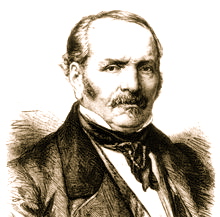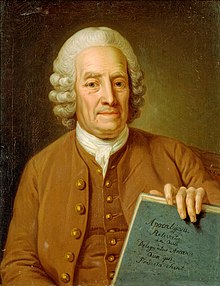Spiritism

The Inroads of Spiritualism
James Arrabito gives a sermon on The History of spiritualism and the New Age Movement. Uncovers Satan’s use of secret societies, rock music, flying saucers, and the media to “deceive if possible the very elect.” Presented in 1983. LLT Productions, Inc., was started up in 1985 by James Arrabito, artist, photographer, and lay evangelist. James Arrabito was tragically killed in an Alaskan small plane crash in 1990.
 Allan Kardec, The Codifier of Spiritism
Allan Kardec, The Codifier of Spiritism
Spiritism is a doctrine codified in the 19th century by the French educator Allan Kardec. Spiritism soon spread to other countries, having today 35 countries represented in the International Spiritist Council.
The first appearance of the term occurred in French literature with the publication of the The Spirits’ Book. In this book, Kardec sought to distinguish spiritualism and Spiritism. Spiritualism is a name common to various religions, philosophies or other names, refers to the opposite of materialism.
Origins
Spiritism is based on the five books of the Spiritist Codification written by French educator Hypolite Léon Denizard Rivail under thepseudonym Allan Kardec reporting séances in which he observed a series of phenomena that were attributed to incorporeal intelligence (spirits). His work was later extended by writers like Léon Denis, Gabriel Delanne, Arthur Conan Doyle, Ernesto Bozzano,Gustav Geley, Chico Xavier, Divaldo Pereira Franco, Waldo Vieira, Alexandr Aksakov, William Crookes, Oliver Lodge, Albert de Rochas, Amalia Domingo Soler and others.
Precursors
Developments leading directly to Kardec’s research were the famous Fox sisters and the phenomenon of the Talking boards. Interest in Mesmerism also contributed to the early Spiritist practice.
Emanuel Swedenborg (January 29, 1688 – March 29, 1772) was a Swedish scientist, philosopher, seer, and theologian. Swedenborg had a prolific career as an inventor and scientist. Then at age fifty-six he entered into a spiritual phase of his life, where he experienced visions of the spiritual world and claimed to have talked with angels, devils, and spirits by visiting heaven and hell. He claimed of being directed by God, the Lord Jesus Christ to reveal the doctrines of His second coming.
From 1747 until his death in 1772 he lived in Stockholm, Holland and London. During these 25 years he wrote 14 works of a spiritual nature of which most were published during his lifetime. Throughout this period he was befriended by many people who regarded him as a kind and warm-hearted man. Many people disbelieved in his visions; based on what they had heard, they drew the conclusions that he had lost his mind or had a vivid imagination. But they refrained from ridiculing him in his presence. Those who talked with him understood that he was devoted to his beliefs. He never argued matters of religion, and if obliged to defend himself he usually did it with gentleness and in a few words.
Sisters Catherine (1838–92), Leah (1814–90) and Margaret (1836–93) Fox played an important role in the creation of Spiritism. The daughters of David and Margaret Fox, they were residents of Hydesville, New York. In 1848, the family began to hear unexplained rapping sounds. Kate and Margaret conducted channeling sessions in an attempt to contact the presumed spiritual entity creating the sounds, and claimed contact with the spirit of a peddler who was allegedly murdered and buried beneath the house. A skeleton later found in the basement seemed to confirm this. The Fox girls became instant celebrities. They demonstrated their communication with the spirit by using taps and knocks, automatic writing or psychography, and later even voice communication, as the spirit took control of one of the girls.
Skeptics suspected this was nothing but clever deception and fraud. Indeed, sister Margaret eventually confessed to using her toe-joints to produce the sound. And although she later recanted this confession, both she and her sister Catherine were widely considered discredited, and died in poverty. Nonetheless, belief in the ability to communicate with the dead grew rapidly, becoming a religious movement called Spiritualism, and contributing greatly to Kardec’s ideas.
Talking boards – Table-turning
Just after the news of the Fox affair came to France, people became even more interested in what was sometimes termed the “Spiritual Telegraph.” In the beginning, a table spun with the “energy” from the spirits present by means of human channeling. But, as the process was too slow and cumbersome, a new one was devised, supposedly from a suggestion by the spirits themselves: the talking board.
Early examples of talking boards were baskets attached to a pointy object that spun under the hands of the mediums, to point at letters printed on cards scattered around, or engraved on, the table. Such devices were called corbeille à bec (“basket with a beak”). The pointy object was usually a pencil.
Talking boards were tricky to set up and to operate. A typical séance using a talking board saw people sitting at a round table, feet resting on the chairs’ supports and hands on the table top or, later, on the talking board itself. The energy channeled from the spirits through their hands made the board spin around and find letters which, once written down by a scribe, would form intelligible words, phrases, and sentences. The system was an early, and less effective, precursor of the Ouija boards that later became so popular.
Allan Kardec first became interested in Spiritism when he learned of the Fox sisters, but his first contact with what would become the doctrine was by means of talking boards. Some of the earlier parts of his Spirits’ Book were channeled this way.
Franz Anton Mesmer (May 23, 1734 – March 5, 1815) discovered what he calledmagnétisme animal (animal magnetism) and others often called mesmerism. The evolution of Mesmer’s ideas and practices led Scottish surgeon James Braid (1795–1860) to develop hypnotism in 1841.
Spiritism incorporated and kept some practices inspired or directly taken from Mesmerism. Among them, the healing touch, still in Europe, and the energization of water to be used as a medicine for spirit and body.
Difference from Spiritualism
Although there are many similarities between the two, they differ in some fundamental aspects, particularly regarding man’s quest toward spiritual perfection and the manner by which the followers of each practice their beliefs.
Spiritism teaches reincarnation or rebirth into human life after death. This basically distinguishes Spiritism from Spiritualism. According to the Spiritist doctrine, reincarnation explains the moral and intellectual differences among men. It also provides the path to man’s moral and intellectual perfection by amending for his mistakes and increasing his knowledge in successive lives. For this reason Spiritism does not accept rebirth in animals as this would be retrogressive.
Allan Kardec refers to Spiritism in What Is Spiritism? as a science dedicated to the relationship between incorporeal beings (spirits) and human beings. Thus, some spiritists see themselves as not adhering to a religion, but to a philosophical doctrine with a scientific fulcrum and moral grounds. On the other hand, many spiritists don’t see any problem about embracing it as a religion as well.
Finally, unlike Spiritualism, Spiritism is not a religious sect but a philosophy or a way of life by which its followers live by. Its followers have no priests or ministers and do not follow any religious rituals in their meetings. They also do not call their places of meetings churches, and instead call them by various names such as centers, society or association. Their activities consist mainly of studying the Spiritist doctrine, applying spiritual healing to the sick and organizing charitable missions.
Another author in the Spiritualist movement, Sir Arthur Conan Doyle included a chapter about Spiritism in his book History of Spiritualism confirming that Spiritism is Spiritualist (but not vice-versa). As a consequence, many Spiritualist works are widely accepted in Spiritism, particularly the works of scientists Sir William Crookes and Sir Oliver Lodge. Such works are more accepted in Anglo-Saxon spiritist communities than in Latin-American ones, though.




